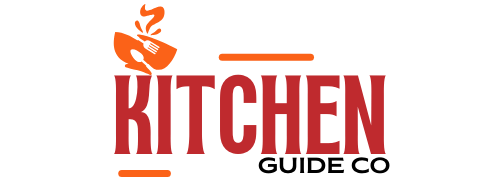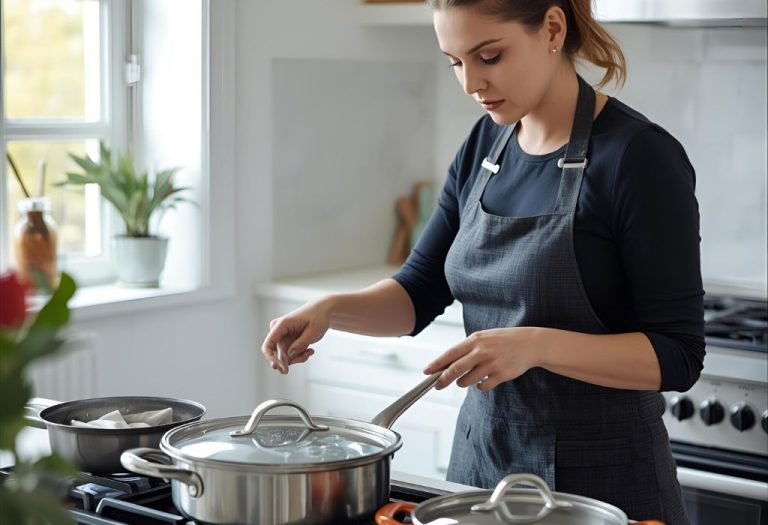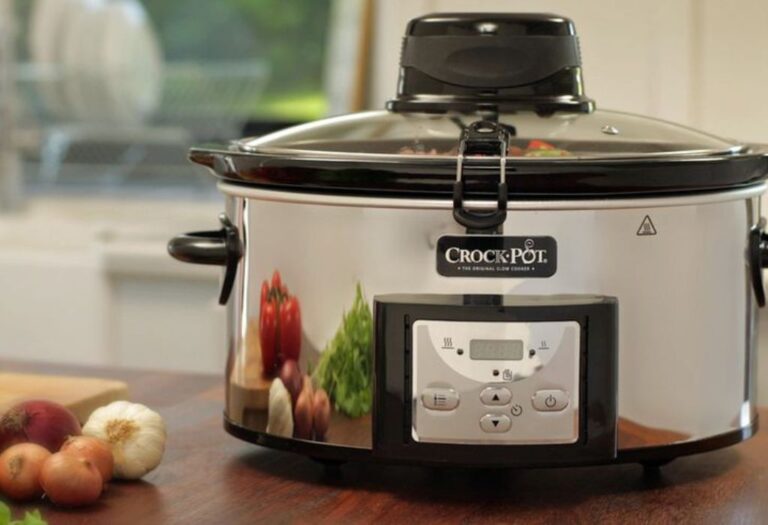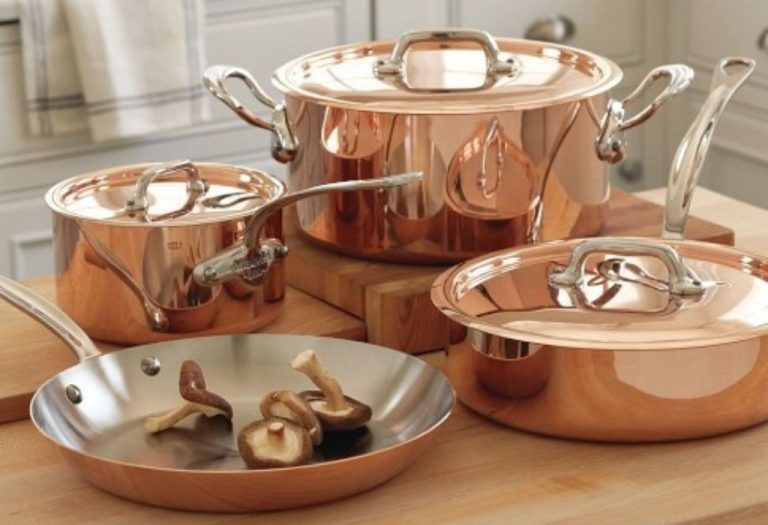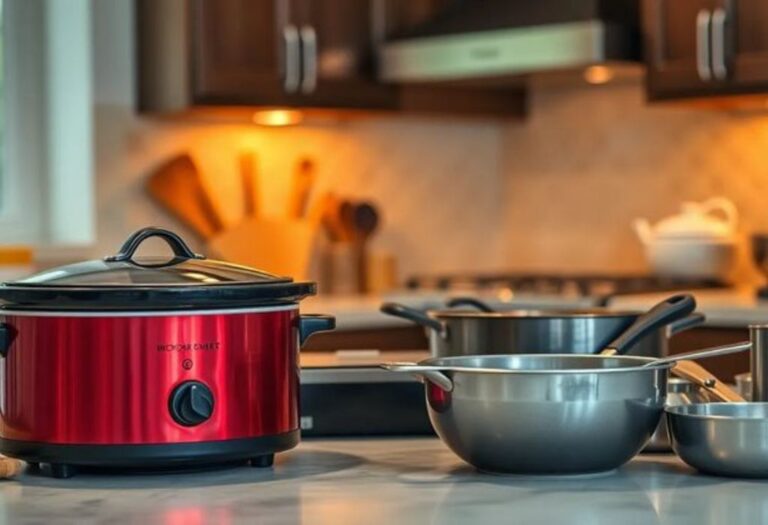The smell of sizzling garlic filled the air as a busy restaurant kitchen worked in perfect sync. Orders were flying in, knives were chopping, and pans hissed on open flames. In this high-energy environment, one small mistake could lead to injury, property damage, or worse.
According to the U.S. Occupational Safety and Health Administration (OSHA), restaurant workers face one of the highest injury rates in the service industry, with thousands of burns, cuts, and slips reported each year. The National Fire Protection Association (NFPA) also warns that kitchens are a leading cause of commercial fires, making safety a top priority.
This guide will cover practical kitchen safety tips for restaurants, designed to reduce risks, protect your team, and keep your business running smoothly.
Why Kitchen Safety Matters in Restaurants
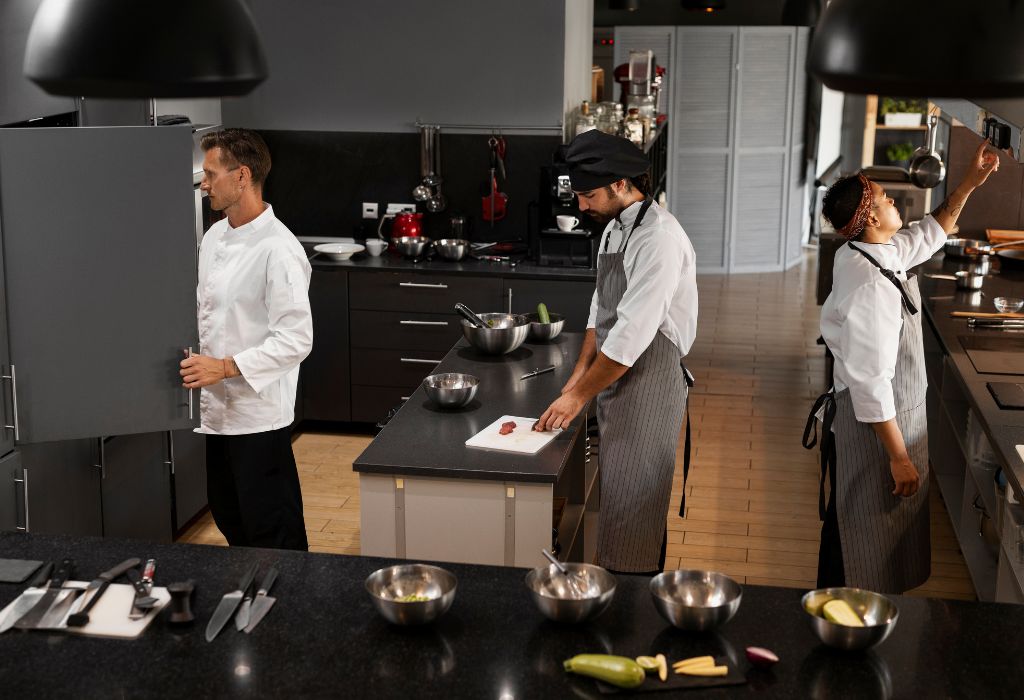
A professional kitchen runs at full speed for hours, with sharp tools, high heat, and crowded workspaces. These conditions create an environment where accidents can happen in seconds.
Beyond protecting staff, maintaining a safe kitchen helps you:
- Reduce costly downtime from accidents.
- Avoid legal liabilities and insurance claims.
- Meet OSHA and local health code compliance.
For verified safety data and guidelines, visit OSHA’s Food Service Safety page and NFPA commercial kitchen fire safety resources.
1. Prevent Burns and Fire Hazards
Open flames, hot oil, and boiling liquids make burns a leading hazard in restaurant kitchens.
How to reduce burn risks:
- Keep pot handles turned inward to avoid accidental knocks.
- Use dry, heat-resistant oven mitts.
- Train staff to open pot lids away from the face to avoid steam burns.
- Keep flammable items away from stoves and grills.
Fire safety essentials:
- Install and maintain commercial-grade hood suppression systems.
- Keep a Class K fire extinguisher near cooking equipment.
- Train staff to smother grease fires instead of using water.
How common are kitchen fires in restaurants?
The NFPA reports that cooking equipment is involved in 61% of restaurant fires, causing millions in property damage annually.
2. Avoid Cuts and Knife Injuries
Knives are essential tools in a restaurant, but improper handling leads to many ER visits each year.
Knife safety tips for staff:
- Always use a stable cutting board, preferably with a damp cloth underneath.
- Keep knives sharp — dull knives require more force and increase slip risks.
- Store knives in a designated rack or magnetic strip.
- Train new staff on correct grip and cutting techniques.
Why is a sharp knife safer?
A sharp blade cuts cleanly with less pressure, lowering the chance of slips.
3. Prevent Slips, Trips, and Falls
Wet floors, clutter, and spilled food are major hazards in busy kitchens.
Prevention measures:
- Clean spills immediately and mark wet areas with caution signs.
- Use anti-slip mats in high-traffic zones.
- Keep walkways clear of boxes, cords, and utensils.
- Encourage staff to wear slip-resistant shoes.
Are kitchen falls a big problem?
Yes. OSHA data shows that slips and falls are among the top three causes of workplace injuries in food service.
4. Handle Electrical Equipment Safely
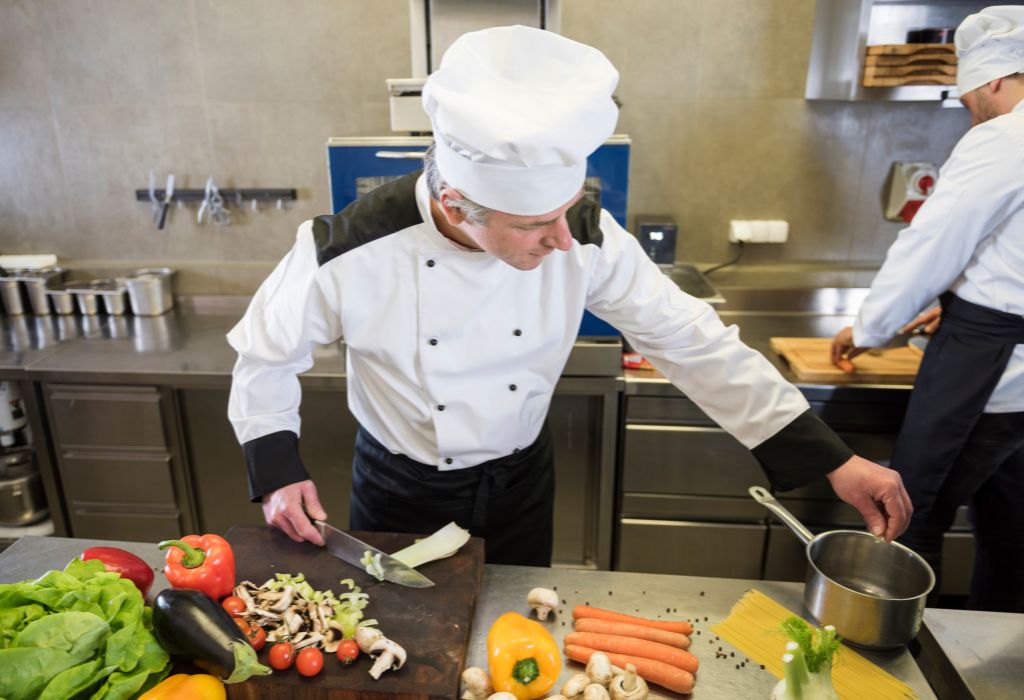
Commercial kitchens run on mixers, blenders, coffee machines, and other electrical tools.
Electrical safety best practices:
- Never use appliances with damaged cords.
- Keep electrical outlets away from sinks and water sources.
- Unplug equipment before cleaning.
- Use Ground Fault Circuit Interrupter (GFCI) outlets where possible.
Why are GFCIs important?
They shut off power instantly if they detect a fault, preventing shocks.
5. Safe Chemical Handling and Storage
Cleaning chemicals keep your kitchen sanitary, but they can cause burns, respiratory issues, or poisoning if misused.
Chemical safety rules:
- Store chemicals away from food prep areas.
- Always label containers clearly.
- Provide proper gloves and eye protection for staff.
- Never mix cleaning agents like bleach and ammonia.
What’s the risk of chemical mixing?
It can release toxic gases, causing severe respiratory harm.
6. Train Staff in Emergency Procedures
Even with the best prevention, emergencies can still happen.
Essential training areas:
- Fire evacuation routes and meeting points.
- How to use a fire extinguisher (PASS: Pull, Aim, Squeeze, Sweep).
- Basic first aid for burns, cuts, and slips.
- Knowing when to call emergency services.
Why is regular training important?
Skills fade over time, so refreshers keep safety knowledge sharp.
7. Maintain Equipment Regularly
Faulty equipment not only slows service but also increases safety risks.
Maintenance checklist:
- Inspect fryers, ovens, and grills weekly for wear and tear.
- Schedule professional hood cleaning to prevent grease buildup.
- Replace worn electrical cords and switches immediately.
How often should hoods be cleaned?
NFPA recommends quarterly cleaning for high-volume kitchens.
8. Manage Heat and Ventilation
A hot, poorly ventilated kitchen increases stress, fatigue, and accidents.
Improving ventilation:
- Install and maintain exhaust hoods.
- Use fans or air conditioning where possible.
- Schedule regular breaks to avoid heat exhaustion.
Can heat cause accidents?
Yes, fatigue and dehydration reduce focus, increasing mistakes.
9. Keep First Aid Kits Accessible
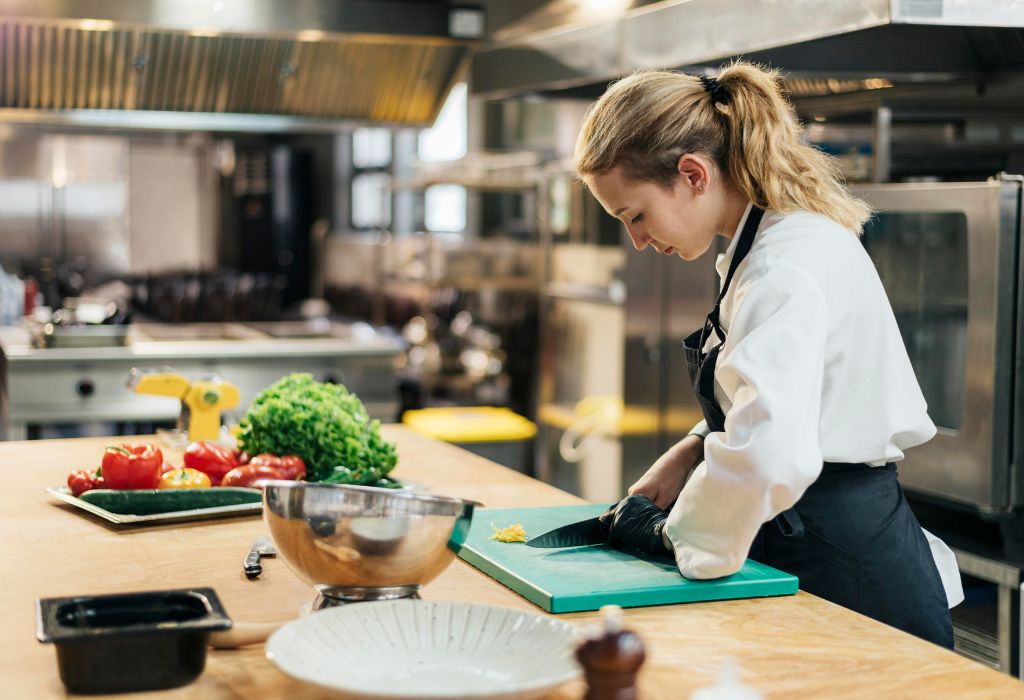
A stocked first aid kit ensures quick response to minor injuries.
What to include:
- Burn ointment and sterile dressings.
- Bandages and adhesive tape.
- Antiseptic wipes and gloves.
Where should kits be placed?
In easily accessible, clearly marked locations near workstations.
10. Promote a Safety-First Culture
Safety isn’t just about rules — it’s about attitude.
How to build a safe culture:
- Encourage staff to report hazards immediately.
- Recognize and reward safe practices.
- Include safety in every team meeting.
Why does culture matter?
A safety-minded team prevents more accidents than rules alone.
FAQs
What’s the most common restaurant kitchen injury?
Burns are the most common, followed closely by cuts and slips.
Do all restaurant kitchens need a fire suppression system?
Yes, most local codes require one for commercial cooking operations.
How often should safety training be done?
At least twice a year, with refreshers after any incident.
Can insurance premiums drop with better safety measures?
Yes, many insurers offer lower rates for documented safety programs.
Are safety shoes required in restaurant kitchens?
They’re not always legally required, but slip-resistant shoes are strongly recommended.
Final Thoughts
Restaurant kitchens are fast-paced and full of hazards, but the right safety practices can reduce risks dramatically. From proper knife handling to fire prevention, every step counts toward protecting staff and your business.
By investing in training, equipment maintenance, and a safety-first culture, your restaurant can serve great food while keeping your team safe and your operations smooth.
I’m Emma J. Caldwell, the founder, lead writer, and home-cooking enthusiast behind KitchenGuideCo.com. With a background in culinary arts and over a decade of cooking experience in both professional and personal kitchens, I created this platform to demystify recipes, offer smart kitchen gadget reviews, and guide readers through meal prep with confidence and clarity.
